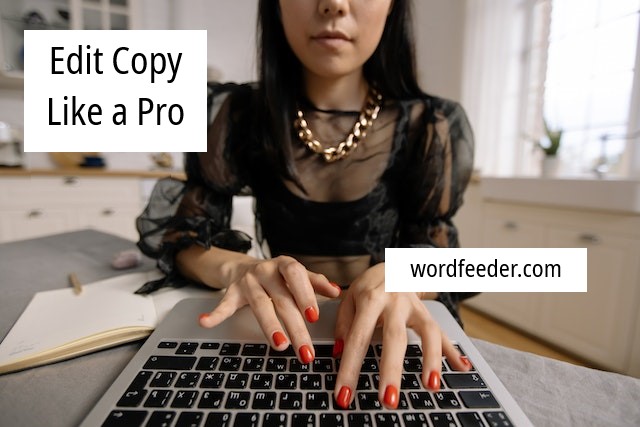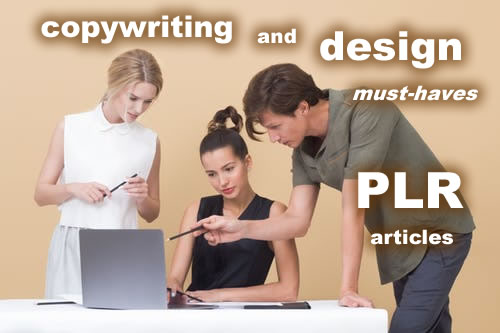How to Edit Copy Like a Pro

Ever wonder how your copy editing skills stack up? Here's something about copy editing that most people have never considered: to do it successfully, you must be able to constantly adjust your perspective of the written piece. Below, some steps for success.
Take the eagle-eye view.
Quickly read through the overall piece, paying attention to the general flow of content. What's the main premise? How well does that idea take shape in the first chapter, and then continue on for full explanation and development in consequent chapters? Is Chapter 3 short on evidence, or short in general? How does the end wrap up?
This is the birds-eye view of the book or ebook as a whole. Also pay attention to tone or voice. Is one particular style of writing carried throughout? Get an overall sense of the project. Does one section seem to belong better in another part of the book? Should certain chapters swap places with each other? Make notes in the margins.
Zoom in to edit the entire book or ebook.
The editor's goal is to make the copy easy to read and understand, and to be sure the intended meaning comes across. This step requires that the content be read aloud so that the words on the page flow as though they're being spoken. It also calls for frequent stops along the way. Tweak as needed, for a word change, omission or addition (or deletion) of certain phrases. All of this takes great concentration, time and effort.
In phase 2, a copy editor may opt for all sorts of changes to the text. This really is necessary if you really want your book or ebook to be the best it can be. Of course, copy editing is an extremely subjective task. One copy editor may decide a certain word or phrase has got to go, while another may feel differently. A really good editor will be able to preserve the original "voice" of the writer – and yes, on occasion, that may mean taking liberty by keeping occasional sentence construction that isn't necessarily correct by the grammar books.
Repeat the above copy editing process.
Yes – editing a book or ebook requires that you read through the copy again and again and again. Each time you go back, you'll find something else that was overlooked the session prior. Even in the very final phase of editing, errors will somehow find their way back into the work. So do not think for one minute that you can get away with just two read-throughs of your book or ebook. It's simply not possible, even for those who have a way with words!
Inject tone of voice.
Once you're pretty solid on how the book or ebook is organized and flows, pay attention to tone of voice. Read through the copy yet again, this time analyzing for word choice and turn-of-phrase. Here, you're specifically looking for "the right way to say it" from the voice of the author, and for the audience. This is a big part of how to keep the client's energy alive throughout. Also be on the lookout for terms that just don't sound quite right, and replace or omit as needed.
Tighten up the copy.
In this read-through, ONLY search for ways to slim down the writing. This is a fun stage where you get to chop out excess verbiage. Look for and then remove: passive voice, repeated ideas, excess prepositional phrases, overuse of adjectives, repeated words and phrases. I find that this particular task does not come strong to many people, hence the very real need for a seasoned copy editor.
Grammar and spelling check.
Sure, you can get some support from MS Word's nifty spelling and grammar check feature. Even so, a pair of human eyes always finds that overlooked mistake. You can usually allow for some amount of colloquial speech, within limits of course. Rid the draft of anything that may make you or the client look less professional.
Format your book or ebook.
This is definitely a key phase in the editing process. Make sure that all headings are the same font and point size; all text has the right amount of space between paragraphs and sentences; all bulleted and numbered lists are treated consistently, and all text that should be bolded, italicized or underlined reflects that particular type treatment. If you're including images in your ebook or book, you'll also want to be sure those are appropriately placed.
Book formatting is a skill best left to the experts. You may find that while your copywriter is great at catching that spelling error or extra space after a period, she doesn't know much about getting your book to look exactly the way you want it. So hire a VA or graphic design expert who has experience laying out books or ebooks. He or she should also be able to perform tasks like inserting your logo into the book using the correct file size for the type of document.
Brand your business.
I don't think that every editor does this, but I do. If you're writing this book or ebook as a way to gain recognition for your business, then you want to insert your brand wherever possible throughout the text. Of course, don't overdo it either – otherwise, you'll come across as too pushy and salesy. So for this stage of the project, I once again go through the entire book or ebook and find ways to mention my client's company name, services, or even include a link to a good article they've written or to their website.
Add institutional copy.
Since we just branded the book, it's time to emphasize the client's business even more by including a bio at the end. If this is an ebook, the client may even wish to include a graphic promotion that matches their website and invites people to click and learn more about their services. It's really up to the client how much self-promotion they'd like to include. Also, it's worth remembering that in the case of a printed book, certain offers they talk about today will likely expire in time. In that case, a generic author bio may in fact be the way to go.
Final review.
In the final review, we once again do a complete run-through of the text, taking a sharp critical eye to every single letter, word, sentence, paragraph, punctuation mark, chapter heading, image, link – basically the whole enchilada. Even better if you can get a second pair of eyes to line-edit the final draft.
The last stage of book editing is no less important than the first, third or 15th... and in fact may be even more crucial. That's because once the piece passes muster, it's out the door and onto printed pages of indelible ink.

